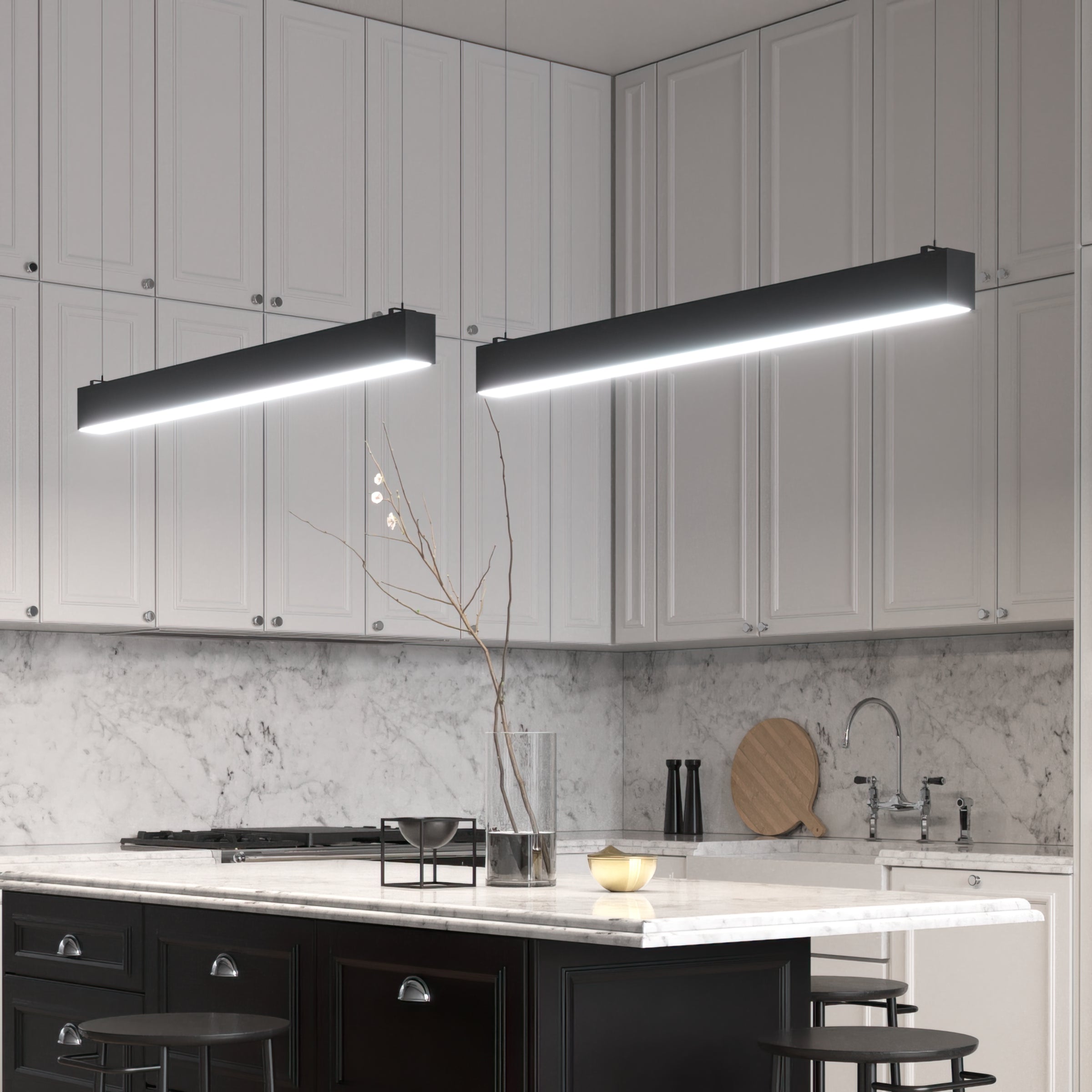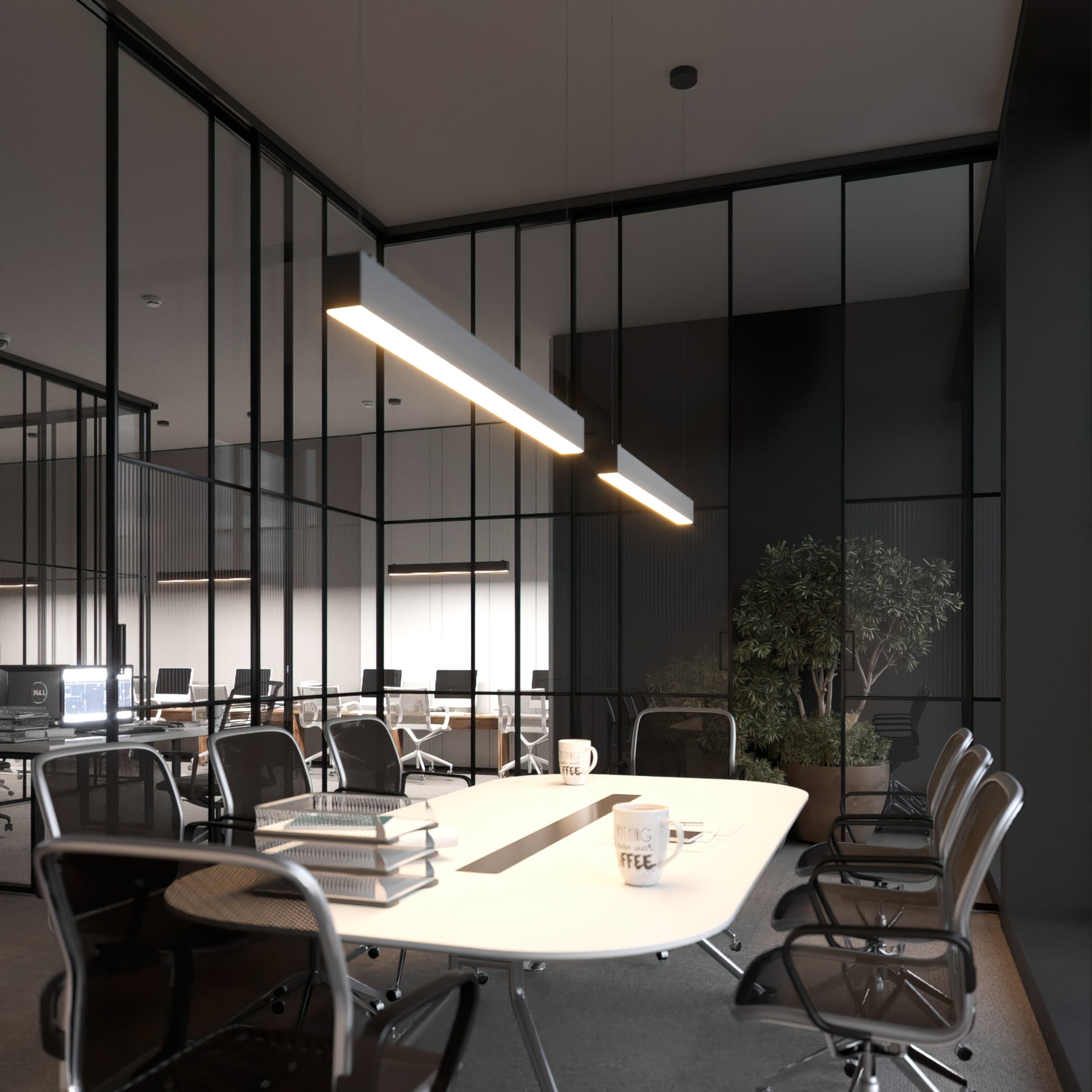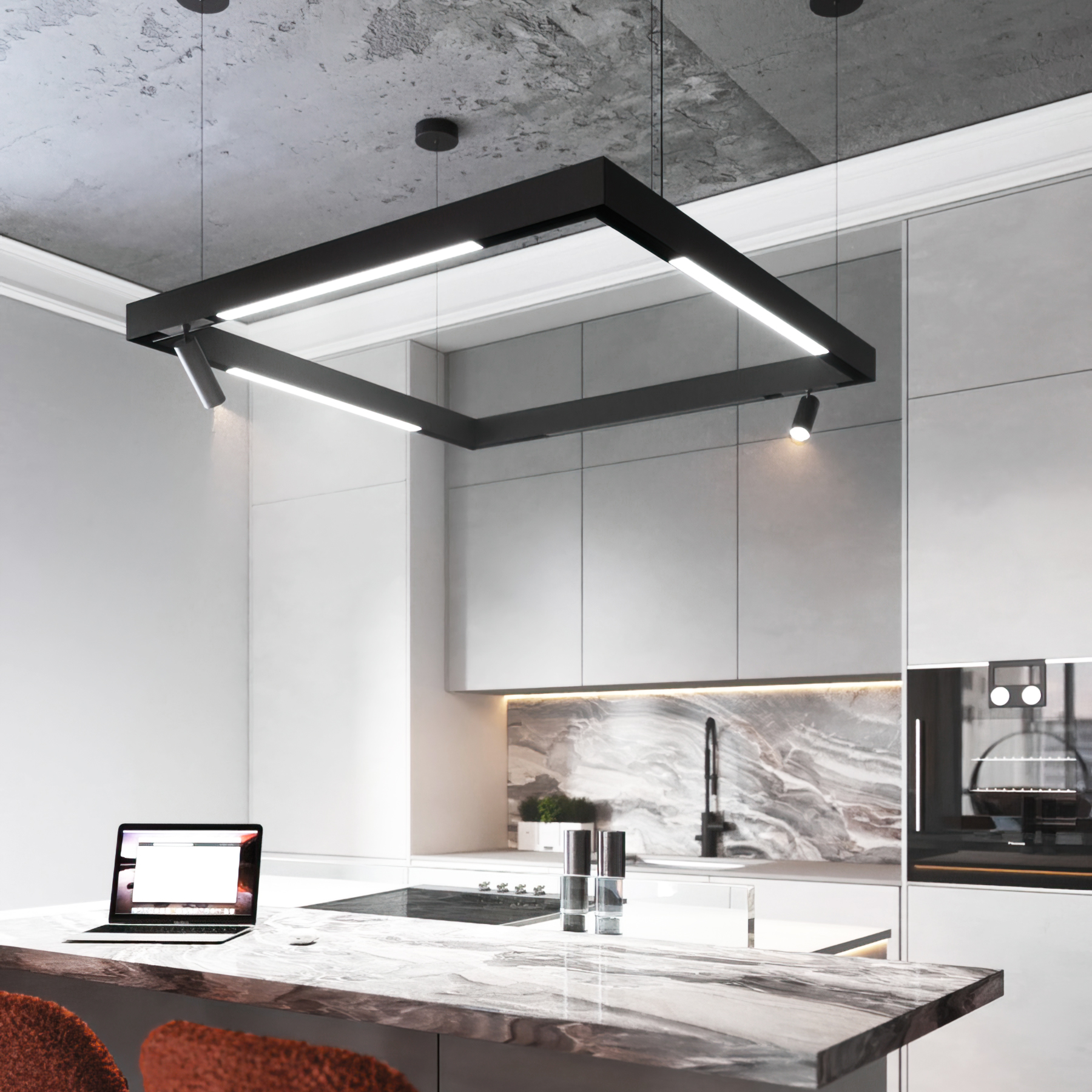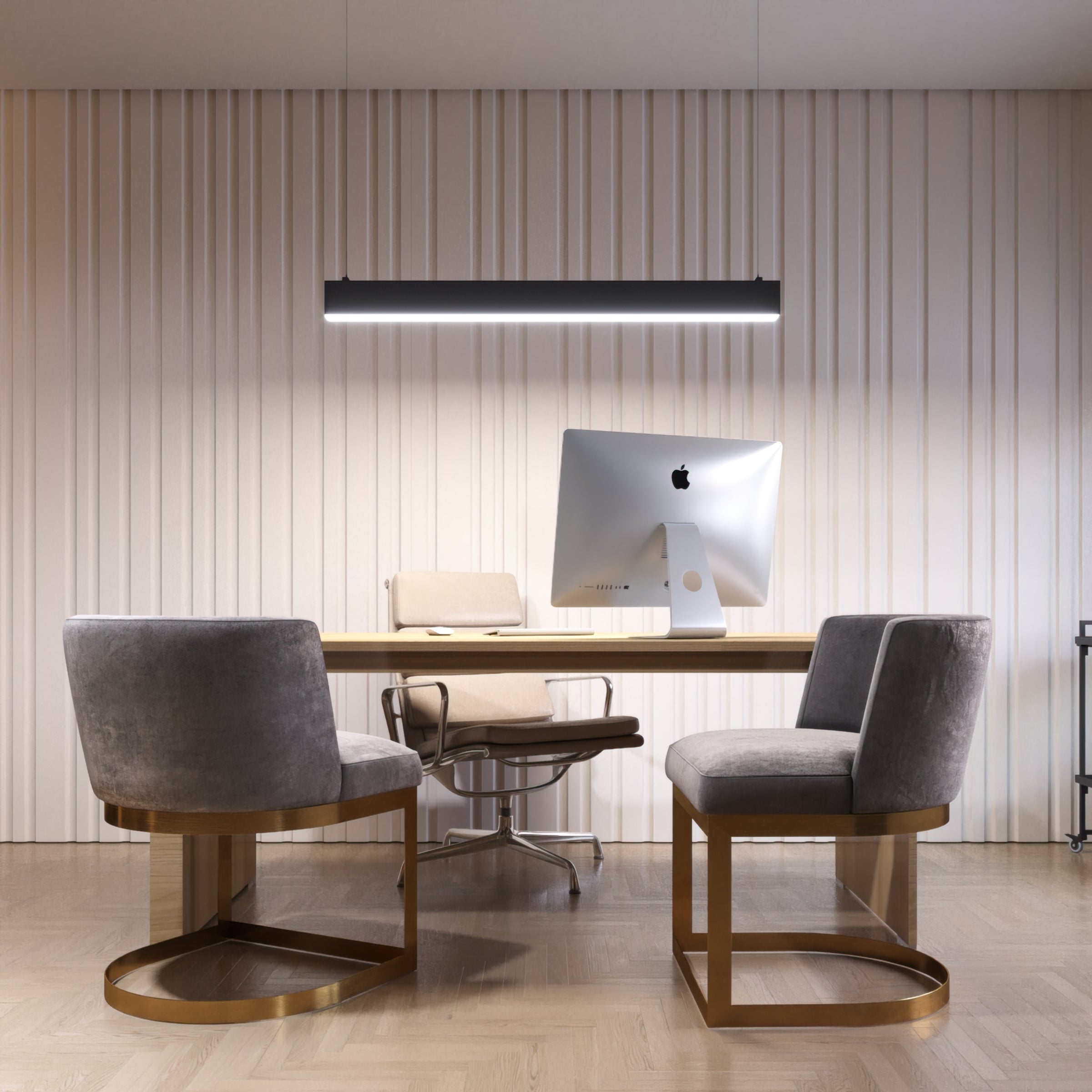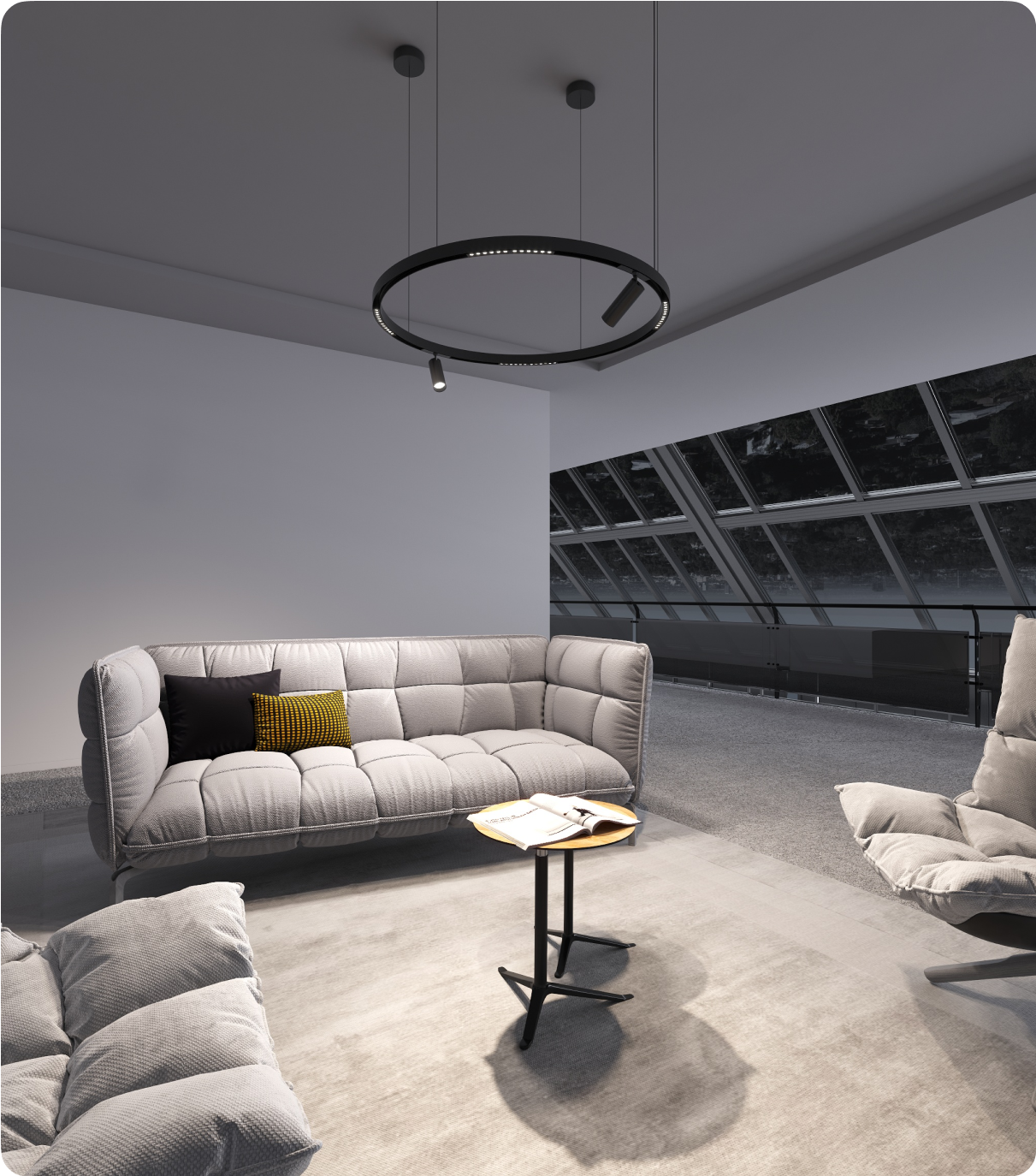Kitchen Recessed Lighting – Layout and Planning
Creating the perfect lighting plan for your kitchen involves more than choosing the right fixtures; it requires thoughtful layout and planning to ensure functionality and style. Recessed lighting, often called can lights or downlights, has become famous for modern kitchens due to its sleek design and versatile application. When strategically placed, recessed lights can provide general, task, and accent lighting, making your kitchen a well-lit and efficient space.
Proper layout and planning are essential for maximizing the benefits of recessed lighting. Factors such as the size of your kitchen, ceiling height, and the specific areas that need illumination must be considered to create an effective lighting scheme. Whether you are remodeling an existing kitchen or designing a new one, understanding the principles of recessed lighting layout can help you achieve a balanced and aesthetically pleasing result.
In this blog post, we will guide you through planning and laying out recessed lighting in your kitchen. We will cover critical considerations such as spacing, proper placement of recessed lighting in the kitchen, and the types of recessed lighting available. Additionally, we will provide tips on avoiding common pitfalls and ensuring your kitchen is not only beautifully lit but also highly functional.

Why Choose Recessed Lighting for Your Kitchen?

Clean and Modern Appearance
Recessed lighting offers a clean and modern appearance, seamlessly blending into the ceiling for a sleek, unobtrusive look. Unlike traditional fixtures that hang down and can clutter the visual space, recessed lighting in a small kitchen is embedded into the ceiling, creating a streamlined aesthetic. This design is particularly appealing in contemporary kitchens where minimalism and clean lines are valued. The hidden nature of recessed lights allows other design elements, such as cabinetry and countertops, to take center stage.
Space-Saving Benefits
One of the significant advantages of recessed lighting is its space-saving benefits. Because these fixtures are installed within the ceiling, they do not take up valuable counter or floor space. This can be particularly beneficial in smaller kitchens where every inch counts. By keeping the ceiling clear of hanging lights, recessed lighting helps maintain an open and uncluttered feel, making the kitchen appear larger and more inviting.
Effective Lighting
Recessed lighting provides both targeted and overall illumination, enhancing the functionality of your kitchen. These lights can be strategically placed to highlight specific areas, such as countertops, islands, and sinks, ensuring that you have ample light for cooking and food preparation. Additionally, when combined with other lighting types, recessed lights can provide comprehensive general lighting that evenly illuminates the entire space, reducing shadows and improving visibility.
Energy Efficiency
LED lights are known for their exceptional energy efficiency. They consume significantly less power compared to traditional incandescent or halogen lights, which can lead to substantial savings on electricity bills. This makes LED recessed lighting an economical choice for homeowners looking to reduce their energy consumption without sacrificing quality or brightness.
Longevity
Another major benefit of LED lights is their longevity. LED lights have a much longer lifespan than traditional lighting options, often lasting up to 25,000 hours or more. This means fewer replacements and less maintenance over time, providing both convenience and cost savings. The durability of LED lights makes them an excellent long-term investment for your kitchen lighting.
Dimmable Options
Many LED lights come with dimmable options, allowing you to adjust the brightness to suit different moods and tasks. This flexibility is particularly useful in the kitchen, where you might need bright, focused light for cooking and softer, ambient light for dining or entertaining. Dimmable LEDs provide versatility and create the perfect lighting atmosphere for any occasion.
Environmentally Friendly
LED lights are also environmentally friendly due to their lower energy consumption and longer lifespan. By using less electricity, they contribute to a reduction in greenhouse gas emissions. Additionally, the extended life of LED lights means fewer replacements and less waste. Choosing LED recessed lighting for your kitchen is sustainable and benefits both your home and the environment.
In conclusion, recessed lighting, especially when paired with LED lights, offers numerous advantages for your kitchen. From a clean and modern appearance to energy efficiency and environmental benefits, recessed lighting is an innovative and stylish choice for illuminating your kitchen space.
Types of Recessed Lighting
Identify Key Areas
When planning your recessed lighting layout, start by identifying key areas in your kitchen that need direct lighting. These areas typically include countertops, the stove, and the sink, where focused illumination is essential for tasks such as chopping vegetables, cooking, and washing dishes. Proper lighting in these spots ensures safety and efficiency during food preparation and cleaning.
Measuring and Drawing a Plan
To create an effective lighting plan, measure your kitchen dimensions carefully. Begin by measuring the length and width of the kitchen, then sketch a rough layout on paper or use a digital tool. Mark key areas that require lighting and note any architectural features or obstacles that might affect light placement. This plan will serve as a guide for positioning your recessed lights and ensuring even coverage throughout the kitchen.
Choosing Key Areas for Focused Lighting
When determining focal points for recessed lighting, consider areas where focused light is most beneficial. Work areas such as kitchen islands, countertops, and dining spaces require additional lighting. Task lighting over the stovetop or sink can enhance visibility and make these areas more functional.
Examples of Focal Points
Practical examples of focal points include placing recessed lights directly above the stovetop to illuminate cooking surfaces or installing lights over the sink to improve visibility while washing dishes. Another example is recessed lights highlighting a kitchen island, creating an inviting space for food preparation and casual dining.
Distance Between Lights Based on Ceiling Height
A general rule of thumb for spacing recessed lights is to divide the ceiling height by two. This method helps achieve balanced illumination without over- or under-lighting the space. For instance, if your kitchen has an 8-foot ceiling, space your recessed lights approximately 4 feet apart. This spacing ensures even light distribution and minimizes shadows.
Avoiding Shadows and Creating Even Lighting
Optimal Distance
You should position your recessed lights at an optimal distance from the walls in your kitchen to avoid shadows and ensure even lighting. The ideal distance is approximately 3 feet. This placement helps prevent shadows that can occur if the lights are too close to the walls, which can make the space feel unevenly lit and less functional.
Tips for Placement
When positioning recessed lights, consider the layout and dimensions of your kitchen. Start by placing lights around the room's perimeter, ensuring they are spaced about 3 feet from the walls. Then, fill the central area with additional lights, following the general rule of dividing the ceiling height by two to determine spacing. For example, in a kitchen with an 8-foot ceiling, place lights approximately 4 feet apart. This strategy helps create a balanced and well-distributed light throughout the kitchen.
Using Dimmers
Installing dimmers with your recessed lighting offers several benefits. Dimmers allow you to adjust the brightness levels to suit different activities and times of day. This flexibility not only enhances the functionality of your kitchen but also contributes to energy savings by reducing power consumption when full brightness is not needed.
Setting the Right Mood
Dimmers are also excellent for setting the right mood in your kitchen. Whether you want a bright, well-lit environment for cooking and cleaning or a softer, cozier atmosphere for dining and entertaining, dimmers provide the versatility to create the desired ambiance. Adjusting the lighting intensity can transform the feel of your kitchen, making it a more adaptable and enjoyable space. You can read more about how lighting affects humans here
Combining with Other Fixtures
Layered lighting combines recessed lights with other fixtures, such as pendants, under-cabinet lights, and wall sconces. This approach enhances the overall lighting design by addressing different lighting needs and creating depth and dimension in the space.
Improving Functionality and Aesthetics
Layered lighting not only improves the functionality of your kitchen by providing task lighting where needed but also enhances its decorative appeal. For instance, pendant lights over an island can serve as both a focal point and a practical light source. Wall sconces can add ambiance and highlight architectural features. By layering different types of lighting, you create a more versatile and visually appealing kitchen.
In summary, avoiding shadows and creating even lighting in your kitchen involves strategically placing recessed lights, using dimmers, and incorporating layered lighting. These techniques ensure a bright, functional, and aesthetically pleasing space that can adapt to various needs and moods.
Frequently Asked Questions
How to Plan a Recessed Lighting Layout?
Planning a recessed lighting layout involves several vital steps to ensure optimal illumination and functionality. Start by measuring your kitchen's dimensions, including length, width, and ceiling height. Next, sketch a kitchen layout, marking key areas that require direct lighting such as countertops, the stove, and the sink. Determine the optimal spacing for your lights by dividing the ceiling height by two. For instance, in a kitchen with an 8-foot ceiling, lights should be spaced about 4 feet apart. This helps create a balanced and even distribution of light.
Tips on Calculating Wattage and Number of Lights
To calculate the required wattage and the number of lights needed, consider the size of your kitchen and the type of lighting desired. A general rule is to provide 35 to 50 lumens per square foot of kitchen space. For example, a 100-square-foot kitchen would need between 3,500 and 5,000 lumens. If using LED lights, which typically provide about 800 lumens per 10 watts, you would need around 6 to 8 recessed lights to achieve the desired brightness.
Factors Affecting Light Quantity
The number of recessed lights needed in your kitchen depends on several factors, including room size, ceiling height, and desired lighting (task, accent, or general lighting). Additionally, consider the color of your walls and cabinets, as darker colors may require more light to achieve the same brightness level as lighter colors.
Example Calculations
For example, in a 120-square-foot kitchen with an 8-foot ceiling, aiming for 40 lumens per square foot, you would need 4,800 lumens. Using 10-watt LED bulbs that provide 800 lumens each, you would need six recessed lights (4,800 ÷ 800 = 6). Adjust the number of lights based on your specific needs and preferences to ensure a well-lit and functional kitchen.
By following these guidelines and calculations, you can effectively plan and implement a recessed lighting layout that enhances your kitchen's functionality and aesthetic appeal. If you are wondering, "How many recessed lights do I need," these steps will help you find the correct answer for your space.
